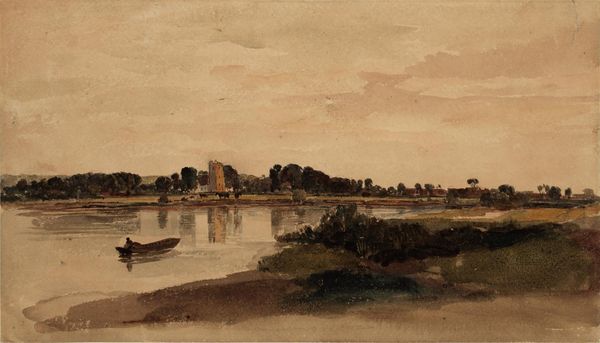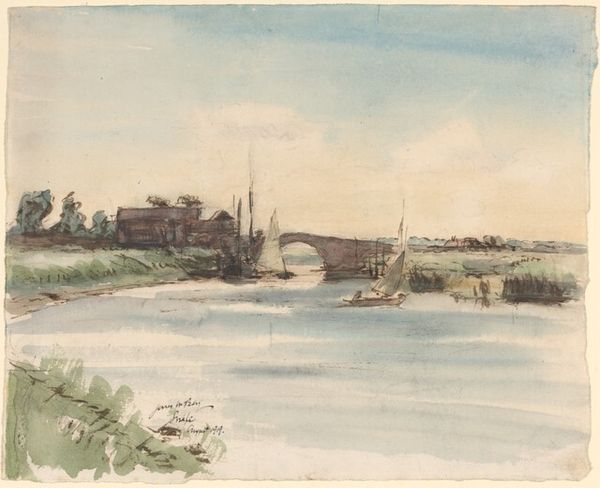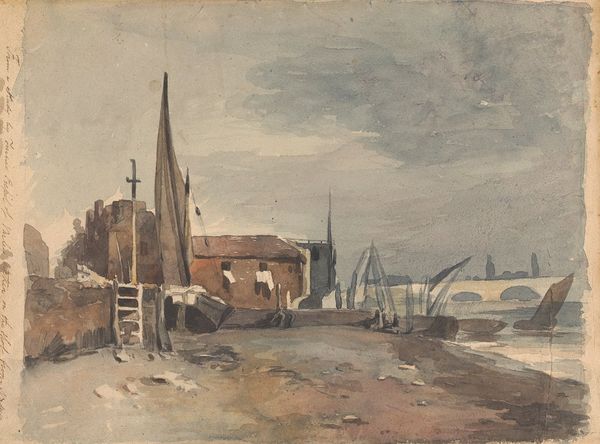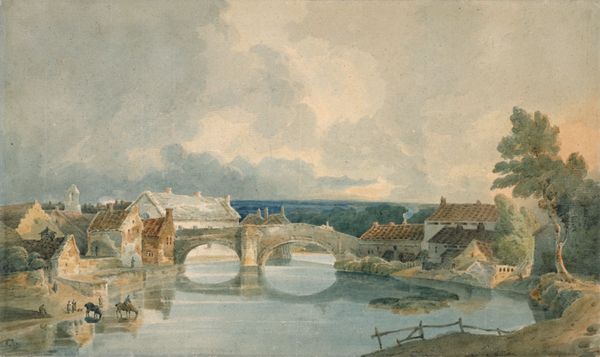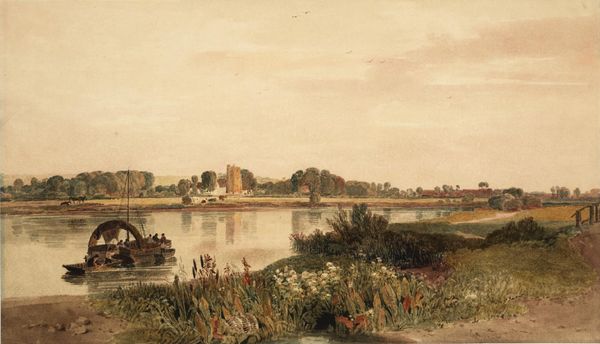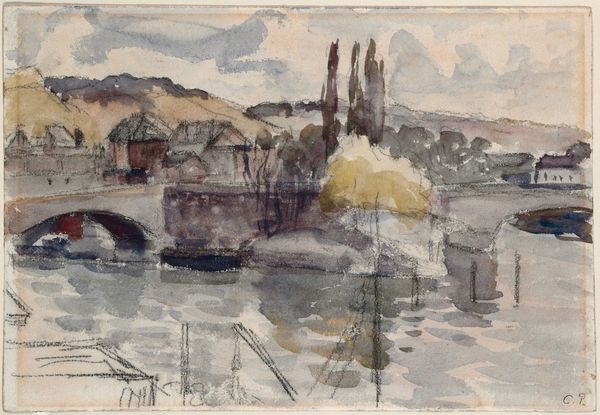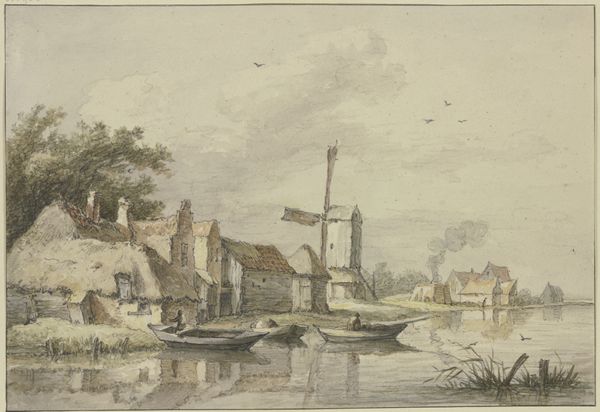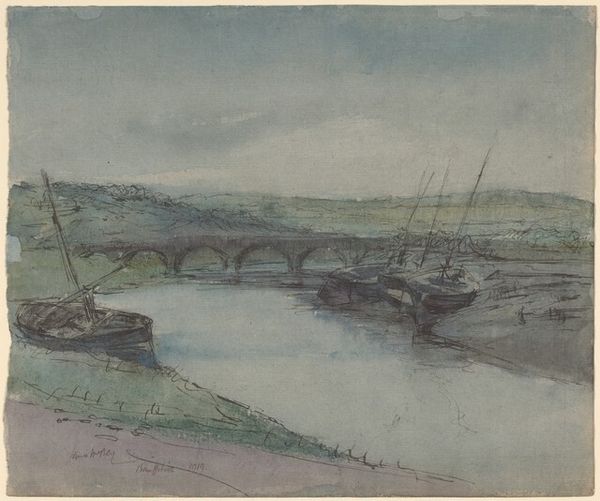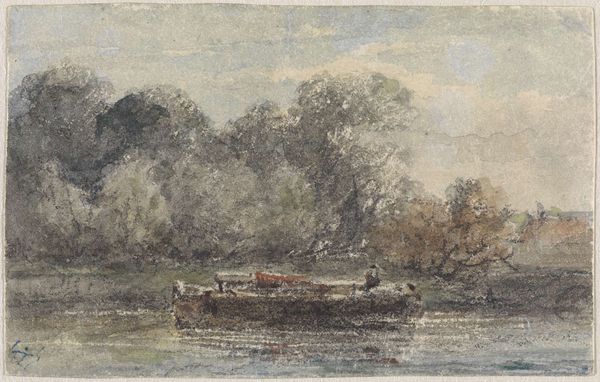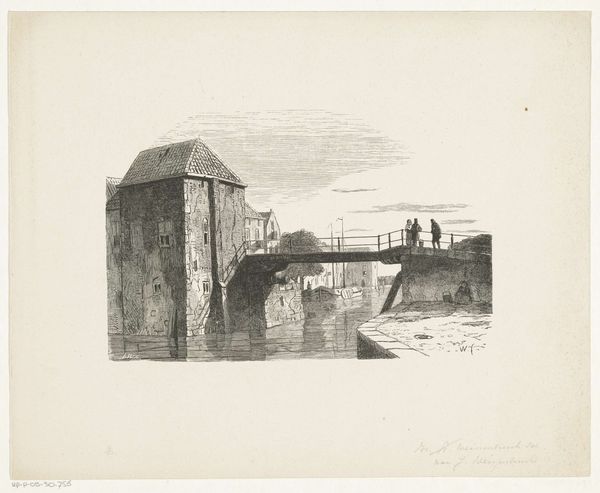
drawing, watercolor
#
drawing
#
landscape
#
charcoal drawing
#
watercolor
#
romanticism
#
watercolor
Copyright: Public Domain: Artvee
Curator: Eugène Delacroix's "The Old Bridge at Nantes," circa 1827, composed using watercolor and drawing, offers us a compelling glimpse into the past. Editor: My immediate reaction is melancholic. The muted watercolors create a somber, almost desolate atmosphere. There's a palpable sense of ruin, not just in the dilapidated bridge, but in the very air of the piece. Curator: The romantic sensibilities of the time certainly played a part in cultivating that aesthetic. This piece really begs the question of how the depiction of decay and the sublime was evolving within 19th-century European culture and whether there's an implied critique of rapid urbanization in the way that Delacroix portrays decay. Editor: Precisely. This crumbling bridge serves as a potent symbol, not just of physical disintegration, but also perhaps the erosion of traditions in the face of modernization. We see this longing and these debates surrounding societal change and their reflection in similar works of art throughout the early 1800's. Curator: The materiality of the medium itself supports that narrative. Delacroix’s strategic layering of watercolor lends to the aged look of the architectural structure portrayed. He really makes sure that the structural decay of the architecture comes through the image by employing such fragile medium techniques. Editor: True. Watercolors have a fluidity and impermanence that aligns perfectly with the theme. And in a political environment, there's definitely space for interpretation to allow it to speak to that very real vulnerability. Considering Romanticism's emphasis on subjective experience, I wonder if there's something about accessibility. This landscape almost seems less about an idealized beauty and more about evoking the viewers inner emotions, maybe that could be about their own society at large. Curator: I think the bridge, viewed through our contemporary lens, might also remind us that our present-day architectural choices and policies should strive to consider how any creation and change inevitably leads to an afterlife for our contemporary communities and its own inevitable deconstruction. Editor: Absolutely. Delacroix gives us a valuable way of thinking through these cycles. There’s a bittersweetness in its visual appeal, as viewers get caught up in a historical interpretation of the inevitable cycle of civilizations.
Comments
No comments
Be the first to comment and join the conversation on the ultimate creative platform.
